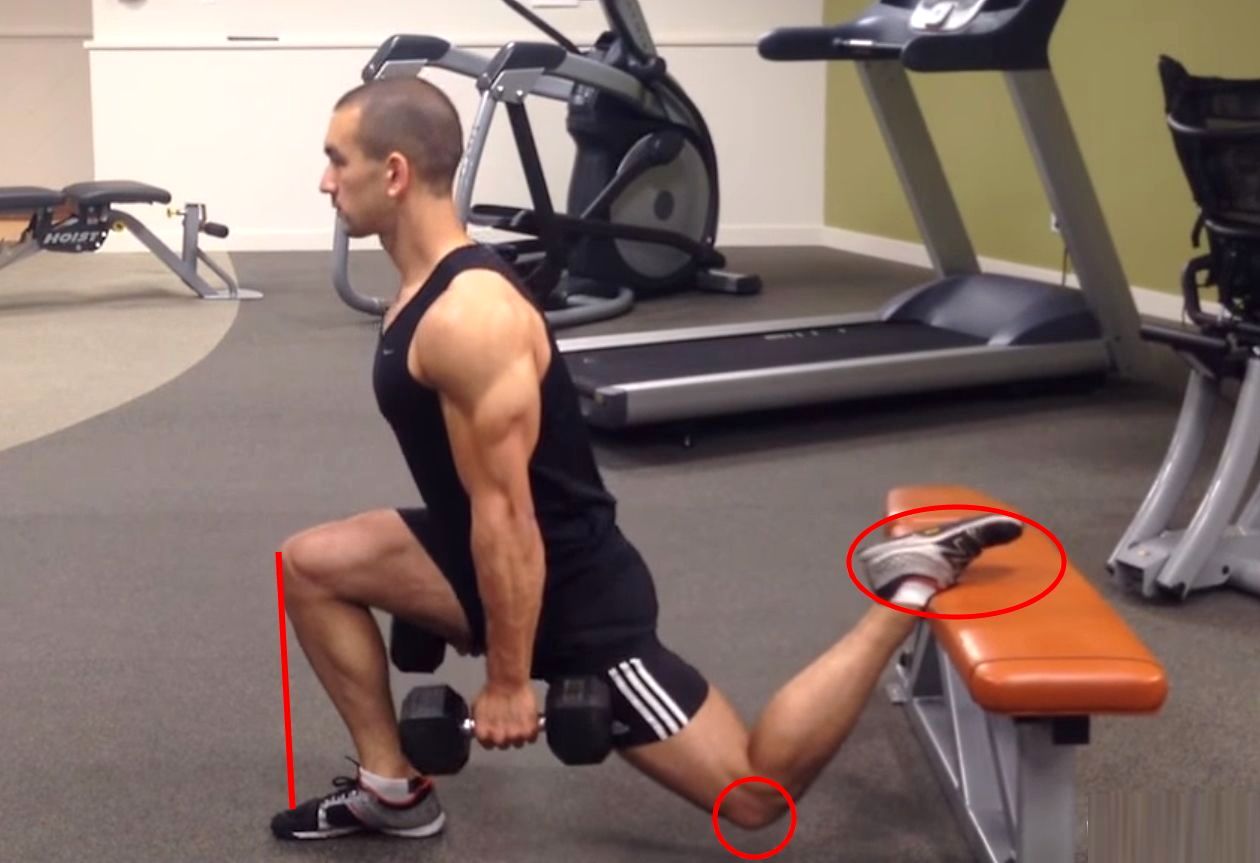The Bulgarian split squat is a great alternative to the conventional squat. The exercise offers a solution for those who train at home and have little training material. Because by performing split squats unilaterally, you can rest your available resistance (including your body weight) on each leg separately.
PURPOSE
Just like with the barbell squat, you mainly train your thigh muscle, the quadriceps, with the Bulgarian split squat. But your gluteus maximus, your butt, also has a lot of work to do – as long as you sink deep enough. Finally, your hamstrings, calves and abs also help.
The fact that you can use significantly less weight with unilateral squats than with regular squats makes no difference to muscle growth. After all, it’s about the mechanical tension you create by training your sets to near muscle failure, regardless of the weight you use. You just have to put your ego aside. But you won’t need that at home anyway.
Do you often suffer from lower back pain, in general or specifically with squats? Even then, the Bulgarian split squat is worth considering, because the exercise puts less pressure on your lower back than bilateral squats.
PERFORMANCE
In the Bulgarian split squat, you put one foot behind you on an elevation of 35 to 45 centimeters. That can certainly be the seat of your sofa. Place your other foot slightly in front of that elevation, after which you lower yourself with your torso leaning slightly forward.
The idea is that you sink as deep as possible, namely until your back knee just doesn’t touch the ground.
PLACEMENT OF THE FEET
The most difficult aspect of the Bulgarian split squat is determining the correct distance between the feet. Also one of the most important aspects, because that distance determines the range of motion and how much pressure is placed on your knees. You will have to figure out for yourself what the ideal distance is for you.
To do this, stand in front of the platform and place the toes of your back foot slightly away from the edge of the platform. In the lowest position, a small part of your foot will lie over the edge. So don’t place your foot too far forward or back on the platform.
Place your front foot forward about three jumps. Make sure that your knee in the bottom position is just slightly past the middle of your foot. Putting your foot too far forward or back can be unhealthy for your knees.
 In the bottom position, your back foot rests on the edge of the platform, the knee of your back leg just barely touches the floor, and the knee of your front leg stays in front of the toes. (Source: YouTube / Sean Nalewanyj)
In the bottom position, your back foot rests on the edge of the platform, the knee of your back leg just barely touches the floor, and the knee of your front leg stays in front of the toes. (Source: YouTube / Sean Nalewanyj)As mentioned, it takes a while to find the exact right distance. Once you’ve found it, place a dumbbell, weight, or other object on the floor to mark the location of your front foot.
When viewed from the front, your foot is roughly aligned with your shoulder, pointing straight ahead. The latter is different from the bilateral squat, in which your feet point slightly outwards.
VARIATIONS
Do you want to involve your buttocks a little more in the exercise? Then step a little further forward, but don’t overdo it: your knee should still slide slightly over your foot.
If you want to use your quadriceps even more, step out slightly less far, but make sure that your knee stays in front of the ends of your toes.
HINTS AND TIPS
- Don’t place your back foot too high, because that will create an unnecessary stretch in your back leg. It is your front leg that you want to train and that 90 percent of the weight should rest on. An increase of 40 to 45 centimeters is optimal for most people, 30 to 40 centimeters if you are a bit smaller.
- In the top position, keep a slight bend in your knees. So don’t overextend your knee joint.
- Keep your upper body straight, with a neutral spine, without excessive arching in your lower back.
- Don’t lean forward too much. In the lower position, your torso and lower leg are parallel to each other. Your torso will remain at the same angle throughout the exercise, including when you come back up.
- Perform the exercise without additional resistance first. Once you’ve mastered the technique, you can add weight by holding one or two dumbbells or kettlebells at your side, holding one dumbbell or kettlebell in front of you (as in a goblet squat), placing a barbell around your neck, or by using a resistance band. to use.
- Always start your sets with your weaker leg.
PROGRAMMING
- For optimal quadriceps growth, most intermediate to advanced bodybuilders will need 12 to 18 sets per week , with a maximum of 5-10 sets per training session.
- Do the Bulgarian split squat 1 to 3 times a week, with 2 to 4 sets per leg.
- Do as many reps per set until you are 1 to 2 reps away from muscle failure (1-2 RIR).
See also: The OFFICIAL Bulgarian Split Squat Checklist (cover photo).